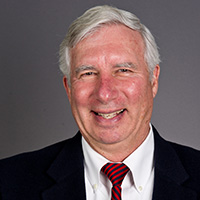
Scotts Miracle-Gro Co. merging Scotts LawnService with its largest competitor, TruGreen, is no doubt a huge deal—to the tune 2.3 million customers and $1.3 billion in combined revenue—but it wasn’t a huge surprise to some industry observers. And questions remain about how many details will be worked out.
“It was pretty clear that Scotts LawnService wasn’t a core activity for Scotts and may have been a distraction,” said Ron Edmonds, principal consultant for The Principium Group. “They were doing acquisitions and then they weren’t. They were getting into pest, and they bought one company and then nothing else.”
There had been rumors in the past about Scotts eyeing TruGreen as an acquisition, Edmonds said, which Scotts Miracle-Gro Chairman and CEO Jim Hagedorn confirmed during a presentation to investors and analysts Dec. 10. At the same time, an apparent move to gain market share on the lawn care side by acquiring pest control companies seemed to contradict that strategy.
In September 2013, then-president of Scotts LawnService Brian Kura hinted at this move when he told LM, “A next step for growth—and it may be the biggest—is ‘crossing the threshold’ and selling Ortho in homes.”
Throughout 2014, then-COO Barry Sanders discussed making regional acquisitions of pest companies, Columbus Business First reported.
Then, in October 2014, the company announced plans to acquire Action Pest Control, a Louisville, Ky.-based regional pest management company with approximately $15 million in annual revenue. Shortly thereafter, Sanders left Scotts during a restructuring.
And, less than a month after closing on the Action deal in January, Scotts seemed to change course on the pest market.
“We’re just trying to be careful and I think it is probably going to cause us to slow down a little bit on the pest side,” Hagedorn said, according to Columbus Business First.
So what will happen to Action Pest? It’s part of the merger, and as part of the transition TruGreen is working on how it will fit in with the new company, a TruGreen spokeswoman told LM.
Good news?
Like the megadeal that merged Brickman Group and ValleyCrest Landscape Cos. (now BrightView), the landscape industry’s two largest companies at the time, some people see the TruGreen/Scotts LawnService deal as a good thing for smaller companies.

Richard Bare, owner of Arbor-Nomics Turf, is predicting the deal could cause his phone to start ringing with customers who aren’t happy about a shake-up with their lawn care provider. Arbor-Nomics is an Atlanta-area lawn care firm with about $8 million in revenue.
“If Mrs. Homeowner wants more personal service, we should pick up a lot from that,” he said. “Whenever there’s consolidation, it does make opportunities for smaller outfits (to gain market share).”
Edmonds points to the $50 million in “synergies” the combined companies expect to see over a three-year period. Scotts Miracle-Gro said those would come in five areas: facilities and operations, marketing and sales, customer service and administration, procurement, and corporate general and administrative expenses.
“My best guess is that much of that is people,” Edmonds said, equating it again to the Brickman/ValleyCrest deal. “There will be some people available that have a lot of experience in this business. How locked up they are, I don’t know.”
Edmonds said many of the redundancies in people will be at the corporate level, but Bare said it could translate to technicians, as well.
On the marketing and sales front, Scotts executives said both companies have a marketing footprint of 25 million households, and they could save a lot of money not having to compete against each other.
The geographic overlap is another question. The companies didn’t reveal how many markets they both operate in, but Scotts executives presented a map showing a lot of overlap in the East and Southeast.
Complicating matters is the fact that both companies have corporate and franchise locations.
Franchise agreements for both Scotts LawnService and TruGreen franchise owners will be honored, a TruGreen spokeswoman told LM.
“To the extent that there are market overlaps, we plan to work through those items in a timely manner,” she said.
On the mergers and acquisitions front, Edmonds questions how this deal will affect activity in 2016. Not only does it eliminate one potential buyer, he predicts the TruGreen management team will be focused on this integration rather than on making new acquisitions.
That said, if TruGreen suspends acquisitions for a year or so, it opens the door for regional players or what Edmonds calls “a new No. 2.” Who that would be, he’s not sure, but he sees the opportunity for several regional players to join forces and acquire smaller companies without much competition.

